It feels like all-wheel drive is the standard for many of today’s performance cars. But it wasn’t always that way. Before Group B rally brought the use of all-wheel drive to the mainstream sports car world, you’d usually only find vehicles with four driven wheels through the use of four-wheel drive, which were mostly trucks or SUVs.
There were some exceptions. The first all-wheel drive production car, the Jenson FF, debuted in 1966. The AMC Eagle, which came out in 1980, was the first American car to introduce a full-time all-wheel drive system. By the middle of that decade, Audi was dominating the World Rally Championship, and Subaru had revealed its first true all-wheel drive system in the third-generation Leone.
As the 1980s came to a close, Subaru had been dabbling in WRC competition for nearly two decades. But in 1990, it started to get serious. The road cars that resulted from those efforts spawned a unique driver-controlled drivetrain feature that continues to grace the center consoles of sporty Subarus to this day.
It Always Comes From Racing
At the turn of the decade, Subaru teamed up with Prodrive to compete in the WRC. The British racing shop that would go on to build some of the most legendary Subaru rally cars in the company’s history, racking up 46 rally wins and three championships. This success would drive Subaru engineers to develop rally-ready tech that it could incorporate into its road cars.
The result was a system called the Driver Controlled Center Differential, or DCCD. In the simplest terms, it’s a system that uses a knob (or a rocker switch, depending on the model) to control the amount of lock on the AWD system’s center differential.

This feature was introduced in 1994 on the Impreza WRX STI Type RA and remained a signature part of Subaru’s STI-branded cars from one form or another all the way up until 2022, when the company ended production of the STI. But now it’s back again… in a concept shown at this year’s Tokyo Mobility Show, anyway. So I thought it might be a good time to discuss how the system functions.
How Does DCCD Work?
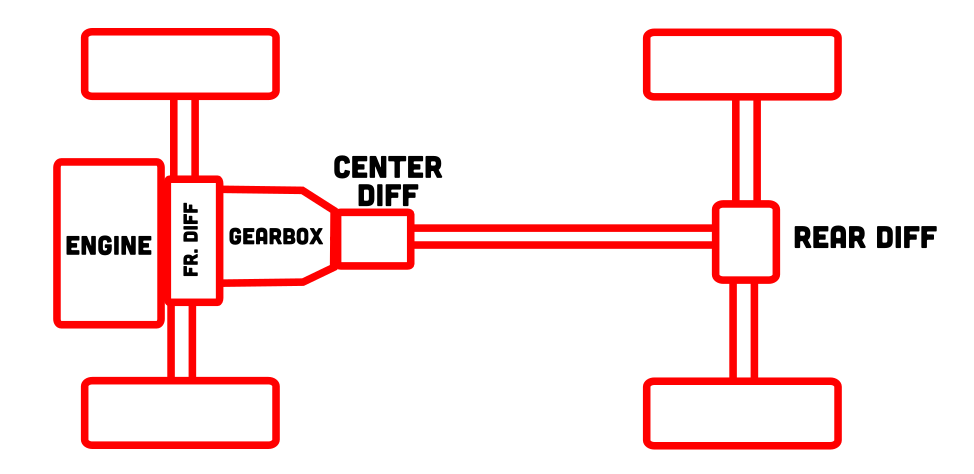
To understand how Subaru’s DCCD system operates, it’s best to know how Subaru’s normal all-wheel drive functions. Symmetrical all-wheel drive, as Subaru calls it, is pretty similar to many AWD systems on the market, with the engine sending power to the gearbox, which then sends power to a center differential, which, in turn, splits that power to the front and rear differentials.
In a standard Subaru, the center differential is a viscous unit that limits slip using a special silicone fluid, causing friction between a series of clutches to direct power to the wheels with more grip. In a Subaru equipped with DCCD, this viscous tech is replaced with an electromagnetically controlled clutch pack that can control the amount of slip—specifically, the difference in rotating speed between the front and rear axles.
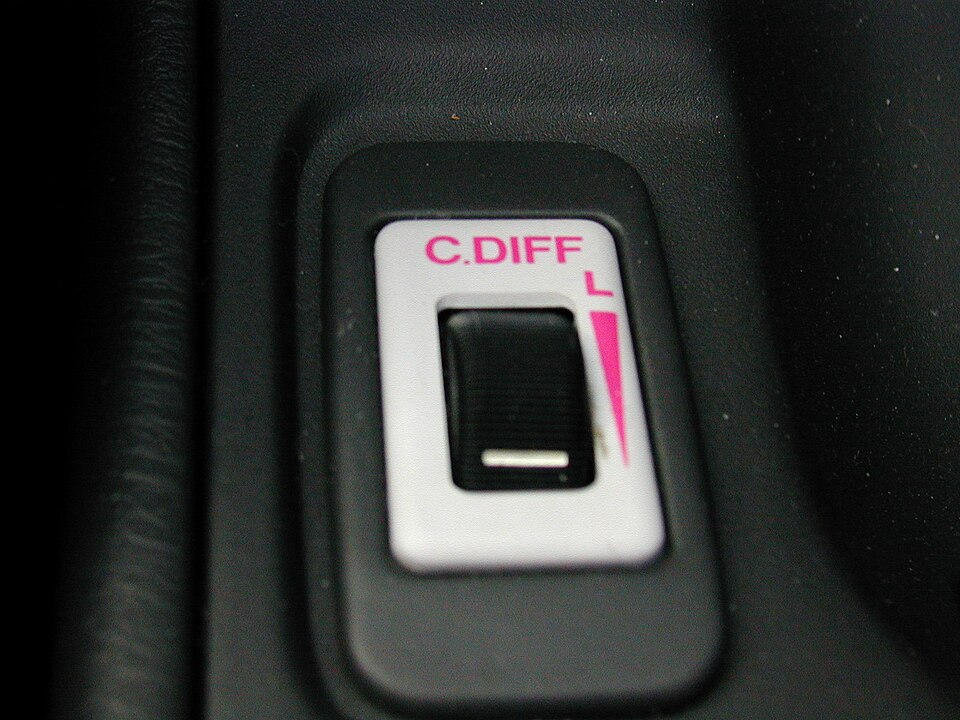
What makes the DCCD system unique is its ability to be driver-controlled, rather than automatically controlled and operated by the car’s onboard computer. A thumbwheel found in the center console, simply labeled “C. DIFF,” allowed the driver to set the center differential from unlocked to fully locked, with various levels of in-between settings, based on road conditions or your driving style. If you wanted, you could also leave it in full auto mode, where the system would decide how much lock to provide based on various sensors throughout the car.
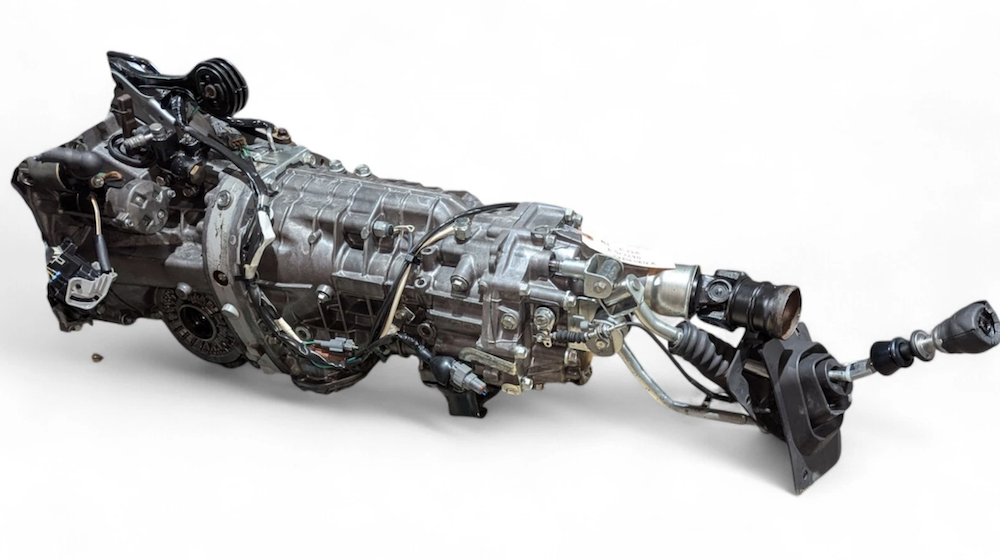
Later versions of the DCCD used a rocker switch and had three automatic modes: Auto+, Auto, and Auto-. Here’s what each of them was for, according to Subaru:
AUTO [+]: This mode emphasizes traction control and strengthens the limitation of differential action that is suitable for driving on slippery roads for vehicle stability
AUTO: This mode is suitable for most driving situations.
AUTO [−]: This mode is suitable when you seek quick response from the steering wheel and smooth driving.
Turning the dial all the way to locked, or “L,” as it’s represented on that thumbwheel panel, and the center diff would have its clutches fully engaged, locking the speeds of the front and rear axles together, as if it were a normal center-locking differential. Doing this on pavement isn’t recommended because it could cause binding within the system. Going fully locked is best suited for low-traction situations, like on gravel, dirt, sand, or snow. It’s for situations where you need all the grip you can get.
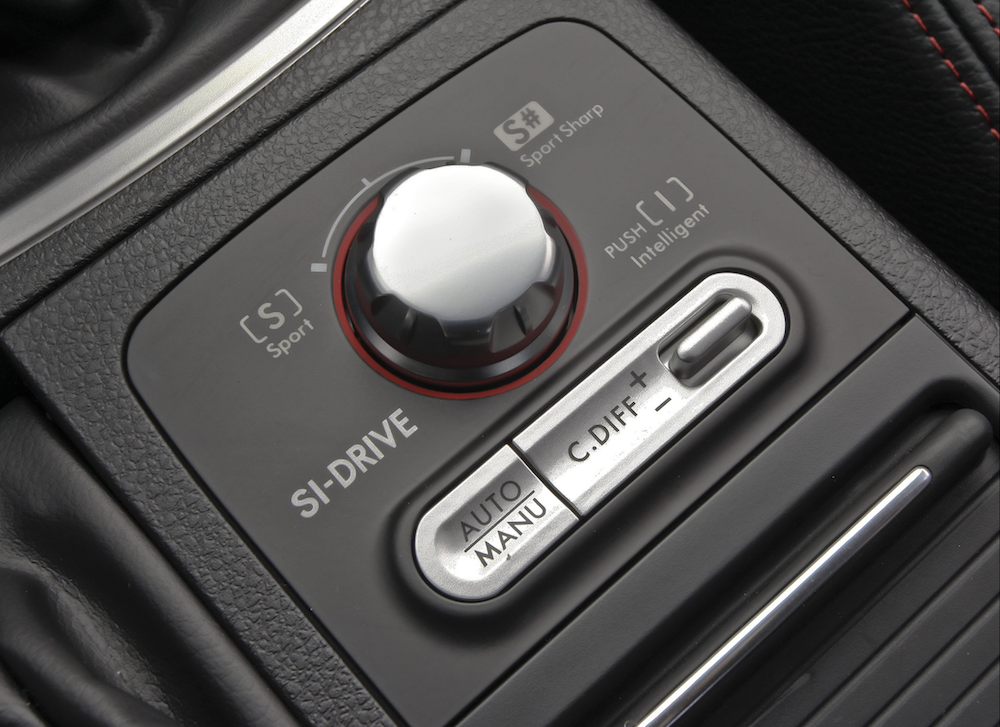
Bringing the system into a fully unlocked position, the center differential would default to the least amount of locking force available. The center diffs in most of these DCCD systems still came with a mechanical limited-slip component, so it could never be truly open, even with the system turned down to its most lax setting. In STIs built after the 2017 model year, Subaru dropped the mechanical LSD in favor of using the clutch plates alone
The magic of the DCCD system, of course, lies between those two extremes. I’ve driven a few STIs now, and it’s fun to play around with the settings to see how the car’s attitude changes based on the center diff’s settings. Is it mostly a novelty? Sure. But it also makes me feel like a ’90s WRC star, which is the whole point of gimmicks like this.
Mitsubishi’s Response
The Subaru WRX STI and the Mitsubishi Lancer Evolution were rivals for decades, with engineers constantly trying to match each other to stay relevant within the market. In 2001, it added a system called the Active Center Differential to the Evolution VII to counter the DCCD. Like Subaru, the center diff used an electronically controlled multi-plate clutch to vary the amount of slip between the front and rear axles.
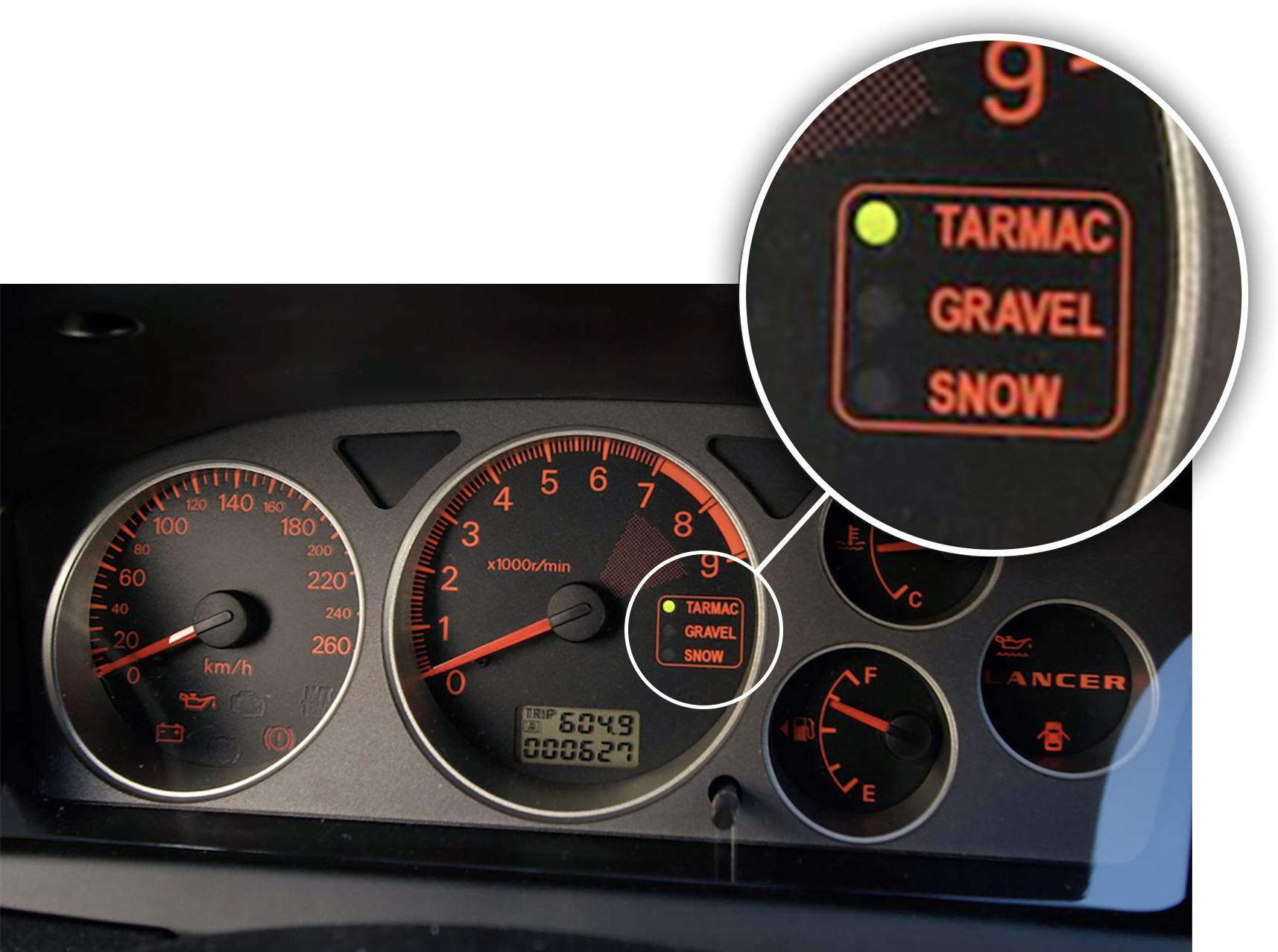
Unlike Subaru’s system, in which the driver could dial in exactly how much locking force was going to the center diff, Mitsubishi’s ACD was a bit more hands-off. Drivers could only choose between three modes: Tarmac, Gravel, or Snow. Based on whichever mode was selected, the car would still be adjusting the amount of slip available, rather than keeping it in a single position. Here’s how the company describes it:
The All-Wheel Control computer takes data input from various sensors to continuously calculate the ACD ‘s limited-slip torque. Steering wheel angle, throttle opening, wheel speeds, and the vehicle’s longitudinal and lateral movements are constantly measured to determine the vehicle’s path of travel. Using this data, the AWC computer determines whether limited-slip torque should be increased or decreased at any given time.
[…]
In each mode, the ACD adjusts center differential locking behavior to suit the road conditions. The car’s other dynamic handling systems respond to the road conditions and driver input. The multi-information monitor, located between the tachometer and speedometer, displays the selected ACD mode and also provide status indicators for ACD operation.
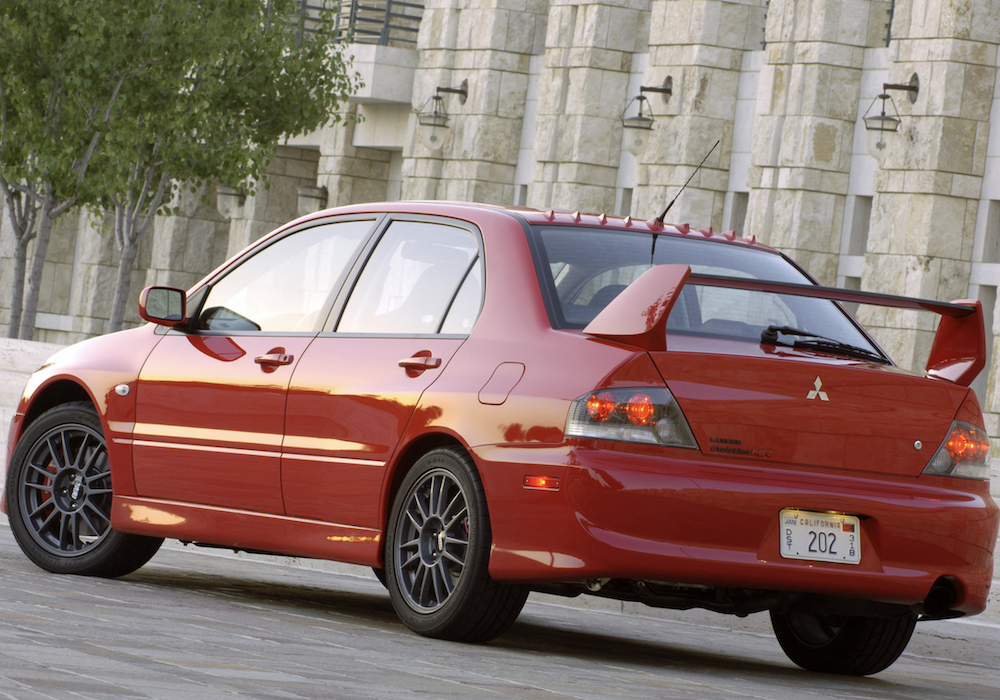
Whether one system worked better than the other is a hotly contested, years-long debate. You’ll have no trouble finding arguments siding with one brand or the other in countless forums and Facebook groups across the internet. Subaru fans will say the DCCD is better because it allows for true driver choice and a greater range of selection, while Mitsubishi die-hards will say ACD is a more straightforward system that takes out a lot of the guesswork of differential tuning.
The Difference Between Subaru’s DCCD And Torque Splitting AWD Systems
It’s important to note that DCCD is not a means of adjusting the torque split between the front and the rear axles. Early DCCD-equipped Subarus had a fixed torque split of 36:64 front to rear, while later cars had a torque split of 41:59 front to rear, according to this write-up of the different DCCD systems by Japanese publication Brakemono. These numbers don’t change, no matter how the DCCD system is set up. All the DCCD does is vary how much slip happens between the front and rear axles. It’s a traction modifier.
The Subaru’s DCCD system is a totally different thing from, say, Toyota’s GR-FOUR all-wheel drive system. Unlike most STIs, the Toyota setup doesn’t have a fixed mechanical setup that locks the drivetrain together—it’s just the clutches that keep things connected front to rear. Drivers can pick between a 50:50, a 60:40, or a 30:70 torque split, depending on the surface and whether they’d like to optimize grip or rotation.

Those clutches can end up getting power levels to different ends of the car, thanks to a unique gearing trick. This explanation from Motor1 explains things succinctly:
The GRC’s rear axle is overdriven very slightly, just 0.7% at the transfer case. By managing the slip of the clutch pack, the GRC can vary its torque split at will. When the clutch is open, the system spins more freely and sends more power to the front. 50/50 is a little more locked up, while 30/70 becomes a real math problem.
Technically, the GRC isn’t sending 70% of its power to the rear. It’s sending 50%, but the slip of the clutch pack determines how much makes it back there. But in 30/70, the rear axle’s gearing advantage combined with a locked-up center clutch pack means that the rear actually starts subtracting torque from the front axle. By speeding up the rear axle, the front axle gets slowed down, sending its torque rearward.
I’d argue systems like Toyota’s are far more interesting and usable for most owners, as they don’t require a whole lot of prior knowledge to operate correctly. But I can’t help but romanticize that little knob in the center console of the STI. It was one of the many offbeat innovations to come from Japan’s bubble era, so to see it resist the changing times and reappear on a brand new concept in 2025 makes me smile.
Top graphic image: Subaru









I guess I will read a bunch more in the “funnest car to drive in the snow article” above. But I have a couple of personal favorites. And now I have at least three days’ worth of food I can prepare in case that happens around here and don’t have to venture out.
To save those of you who care, it was an 84 Tercel 4×4 wagon and a 2002 CR-V. Neither was particularly sophisticated. But they got the job done. Now I just have to to read that article and the comments and bite my tongue.
This was a really cool article, and I learned some new info I didn’t know, even as a self-described “subaru-guy”. I never found myself using the DCCD in my 04 STi hardly ever, unless I was in deep snow, but now wish I had taken more advantage of it.
It’s quite popular in rally for people to buy aftermarket DCCD controllers too
I always like to think about the fact that the features and gadgets and gizmos that Japanese car makers introduced in the late 80s and 90s would have cost more than the car itself if they were released by one of the German brands.
The Americans have typically tried to democratize power.
The Japanese have typically tried to democratize features.
The Europeans?
Volkswagen Beetle. Citroën 2CV. Renault 5. Renault Twingo. Mini Cooper. Fiat 500. Any MG. The list goes on and on. The Europeans have basically democratised the car in its entirety – not only in price, but also in social acceptability for small, affordable cars.
The words “affordable” and “European” should almost never be used together. At least not in areas outside the continent.
And quite honestly, that list is only impressive if you don’t think about the fact that it spans almost 100 years. That’s not a good track record. Within the continent, there are some reasonably priced cars, no doubt, but when most other domestic markets think of European cars, it sure as heck isn’t a Twingo or Fiat 500.
(for clarity, 2 of my favorite cars of all time are French – the DS and Alpine A110)
No, they think of Volkswagen Golfs and Polos, Citroën AX, BX, now C3, Fiat Pandas, Renault 4s, Kangoos, any Dacia, any Skoda, any Trabant, any DAF, Opel Corsa’s, Ford Fiestas… All huge global millionsellers. Like I said, the list is endless. And the fact that it spans almost 100 years only makes it more impressive. But you just go ahead moving the goalposts and assuming that the whole world sees things just like you. Hundreds of millions of consumers in Africa, Latin America, Europe and India are gladly the wiser. Or are these markets not ‘domestic’ enough for you?
By definition, no, they aren’t MY domestic market. Obviously!
And you can pretend that those cars represent “European cars” to you, but that is not what the majority of folks would equate to that term. We both know what cars most people think of, but you simply want to pretend that reasonably priced Fiats or Dacias are it.
Well no, but did you ever stop and think that US cars are just as expensive over on this side of the pond?
In fact, I’m struggling to think of any USDM cars that are exported in large numbers out of North America.
What does that have to do with anything? And let’s be clear – US cars sold in Europe are expensive because of European taxes, not because the cars themselves are that expensive (some are, but not most).
GM sold some 6 million cars last year and more than 1/2 of them were outside of the US.
Ford is in a similar situation, they sold almost 2 million in the US and nearly 4.5 million worldwide.
And of course Stellantis is as international as a car maker can get. They sold 5.5 million globally and around 1.5 million in the US.
And as much as I’d like to forget about them, Tesla sold 1.8 million worldwide and about 600,000 in the US last year.
So not sure what point you were trying to make with your last statement when basically all the US brands sell more vehicle elsewhere than they do domestically.
“ Three Decades Ago, Subaru Changed The Future Of Performance Cars By Allowing Drivers To Control Their AWD”
Every performance car I’ve owned that was made in the last 30 years:
mk2 MR2, MX5, E36 3-series Coupe, S1 Elise, 350Z, mk3 MR2, , E34 BMW 535i, Nissan S13 200SX, GT86 (built but Subaru so doubly relevant), Z4 Coupe 3.0, Lotus Europa S, Z4 M Coupe.
Of those performance cars of the last 30 years the ones that owed anything at all to Subaru’s centre diff technology:
Oh.
It’s not the diff, it’s the fact that the driver can control it.
These days it’s had to find a performance car that doesn’t have different driving ‘modes’. I’ll bet that that if you thought back through all your cars, you’d find a gradual increase in the technology that allowed you to (somewhat) customise your driving experience, without getting the spanners out.
One of the Z4s had a sport mode that ruined throttle pedal calibration. And four of the others had ESP off buttons, which I’d habitually press as I drove off.
None of that mechanically changes anything. I’d love a rear diff that I could lock or change locking ratio on at will. 100% locked is great for sliding around but mostly terrible for low speed understeer.
My newest car is the 2012 GT86 though, so I’m sure more modern cars have more buttons to press.
Okay, so where to begin here. Subaru DCCD is NOT a computer controlled clutch pack which varies torque front/rear. It’s a computer controlled clutch pack ACTING ON A TORSEN CENTER DIFFERENTIAL which varies the TORQUE BIAS RATIO of that differential.
The Torsen’s NOMINAL BIAS ratio is fixed, as you said, but its actual bias is based on available grip at each axle and the bias ratio of the differential which allows for torque to be biased towards that axle. i.e. 100% can go to the back axle instantaneously if fully lock and, say, the front axle is off the ground starting a jump and the rear axle is still on the ground. If left “open” the Torsen will only bias the native torque bias ratio of the differential, probably around 1.5 or 2:1. So it will still bias more torque than the nominal bias ratio (defined by internal gear ratios of gear teeth in the differential), but in limited way…i.e. limited slip. The DCCD clutches changes TBR up to fully locked.
At fully locked, the nominal split DOES actually change since lock requires the differential to equalize speed. i.e. the nominal split at lock is 50:50 (which doesn’t mean equal power to either axle, it means that all thing being equal the power is split evenly, but it can actually bias the most torque to individual axles in this mode. Again up to 100%)
This is great for lose surface traction because the torque will automatically go to where it can be applied to the ground in the greatest amount, but does cause understeer because of the different lengths the front and rear axles have to travel in a turn, which the locked differential doesn’t allow for anymore.
Turning up the duty cycle on the C.Diff adds preload to the lsd, just like adding stiffer springs would do to a clutch pack LSD like a positrac. i.e. makes the differential less willing to differentiate speeds between outputs. This increase the available torque bias but doesn’t directly act on the bias like a clutched coupling would…which is how most Subaru’s today work (only the manuals had viscous coupling).
Basically DCCD is a variable preload center differential. Eventually computer controlled to either be more or less active.
Most, lesser AWD systems today work like you describe, where the clutches directly act on the secondary axle because its way cheaper and easier. Even the fancy GR Yaris does this, but it has a neat trick to overspeed the secondary axle to provide for bias ratios that aren’t otherwise possible.
Torque biasing is a fascinating topic and one I am WAY too into.
I was just going to comment this but you took care of it. I still consider the subaru system one of the best AWD systems ever made. I built my own STI from jdm parts. I had the old school heavily biased rear along with the surtrac front diff. My car would snap oversteer you into a wall during boost if you weren’t careful. The center diff adjustment would help but it was still sketchy. I loved that damn car. I miss it every day.
I agree with your statement that that varying the DCCD clutch locking percentage will change front/rear torque distribution. For example, a fully locked DCCD clutch will cause a 50/50 F/R torque split. However, the differential inside the DCCD is not a Torsen. It is a planetary gearset. Subaru’s technical training materials say that changing DCCD locking clutch percentage WILL change the torque split, even though the center diff itself is not a Torsen type. On 2005-21 STi the front LSD is supplied by Torsen, and on 2007-21 STi the rear LSD is also a Torsen. The 2004-06 STi rear LSD was a mechanical clutch type.
One aspect of the system that was NOT mentioned in this article is the slight difference in front axle vs rear axle final drive ratio. On the 2006-21 STi, the front final drive is 3.90:1, whereas the rear final drive is 3.91:1. (3.545 ring & pinion multiplied by 1.103 transfer gears) This also has an effect on the AWD system performance.
BTW – The article’s description of the non-DCCD Subaru manual transmission center diff is somewhat misleading. Those systems have a mechanical center diff (looks a bit like a conventional open diff) with the viscous coupling acting as a limited slip device. If the front axle speed differs substantially from the rear axle speed, the movement of the slotted steel plates through the special silicone oil (sealed inside the viscous unit) will cause drag that attempts to equalize the speed of the front & rear axles. The issue with the viscous unit, performance-wise, is that it reacts to speed differences rather than torque. You must get wheel spin before the viscous does anything to “fix” the wheelspin condition. By contrast, torque sensing LSDs (like the Torsen in the front and rear diffs of most US-market STIs) work on the torque bias ratio concept and therefore are somewhat proactive in operation to prevent slip at the wheel with lower grip.
Yes, viscous over open. Basically a friction adder for a mechanical open diff. Thats what I had on my 05 FXT. Funny enough its also what I have on my 97 Land Cruiser. of course on the Land Cruiser, I can lock the center diff and I have low range.
Looking into the mechanical DCCD, Subaru calls it Torque Sensing, but it isn’t a TORSEN brand, and it doesn’t use Invex gears like a Torsen. It looks like it uses a ramp cam on the sun gear. It operates on the same principles though, where a torque imbalance creates a lateral force on a ramp to add friction between the two outputs.
FYI, Torsen makes a planetary center differential as well, called the Type-C which is what I have in my GX470.
But what about when Ford muscle cars allowed you to turn your supercharger on and off, changing the future of pursuit cars?
Seeing a button marked C. Diff makes me ill.
Yeah, they really shoulda chosen something other than a bacteria that makes you shit blood.
Good thing there wasn’t a VTEC button in Hondas
https://en.wikipedia.org/wiki/Shigatoxigenic_and_verotoxigenic_Escherichia_coli
Same company that has a performance division named STI.
Picked up an STI? Worried about C-diff? Ask your service advisor if vancomycin is right for you. Just one differential diagnosis is all it takes.
posted for shits and giggles -> lmao
huzzah! @Kuruza
Nominating for COTD
top quality comment. C diff is absolutely awful for real tho!
Was wondering if I was the only one who thought of this…
C. Diff cars are notable for their distinct odor